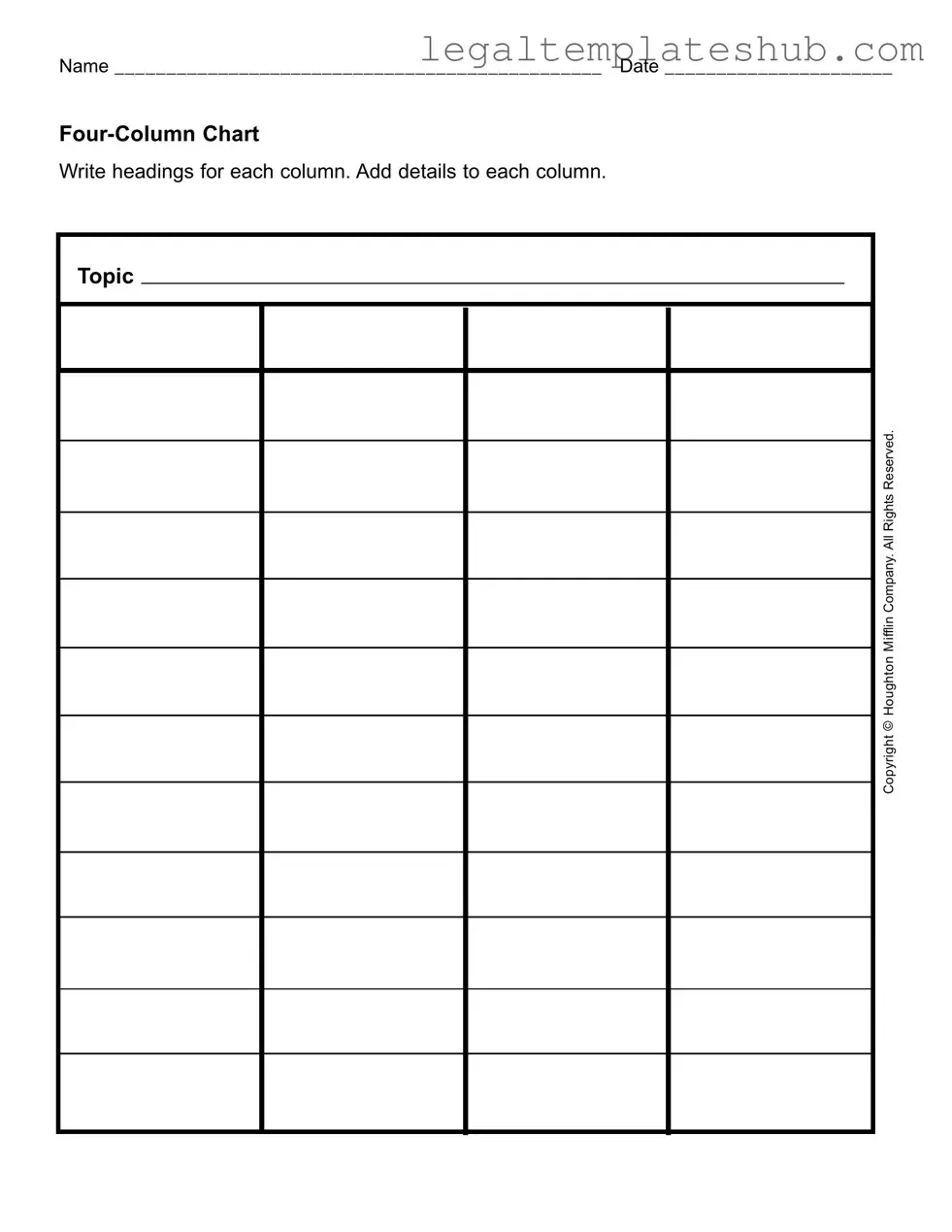Blank Four Column Chart PDF Form
The Four Column Chart form is a structured tool that helps organize information into four distinct categories. Users can easily write headings for each column and add relevant details, making it a practical choice for summarizing topics. To get started, fill out the form by clicking the button below.
Access Editor
